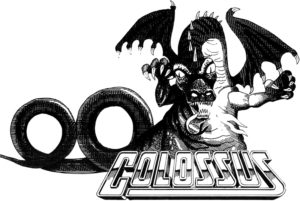
GERMANY
Original Name: Colossus
Originally Built: Jun 1981
Original Location: Oberhausen, Germany
AT LAGOON
Opened: 1 Apr 1983
Location: South Midway
Designed By: Ingenieur Büro Stengel – Munich, Germany
Manufactured By: Schwarzkopf – Münsterhausen, Germany
Ride Model: Doppel Looping with Additional Trackway Curve
Cost: $2.5 million
Max Speed: 55 mph
Max Height: 89 feet
Track Length: 2,850 feet
Lift Length: 197 feet
Lift Grade: 35º
Loop Diameter: 65 feet
Base Dimensions: 227 x 103 feet
Ride Capacity: 28
Number Of Trains: 3
Ride Time: 1 min, 45 sec
Hourly Ride Capacity: 1,600 people per hour
Roller coasters were a booming business in the 1920s. But after the Great Depression and World War II, fewer and fewer coasters were being built and many were torn down. The industry stagnated until 1959 when Disneyland’s Matterhorn turned the tide. Designed by Arrow Development, the Matterhorn Bobsleds were the first to use a tubular steel track and nylon wheels allowing for smoother rides and more daring track designs.
This innovation sparked a roller coaster renaissance. The first steel coaster to take riders upside-down was The Corkscrew at Knott’s Berry Farm in 1975. The first vertical loop was introduced the following year on the Great American Revolution at Six Flags Magic Mountain – a ride designed by Anton Schwarzkopf of Germany.
Schwarzkopf had been designing flat rides since the ’50s and he developed his first roller coaster in 1964. According to a German documentary, he never took vacations and was involved in every aspect of a ride’s creation, even down to the signage. But structural engineer Werner Stengel was also a big part of Schwarzkopf’s success. For example, it was Stengel’s clothoid-shaped loop that made looping coasters smoother and more comfortable.
After designing the aforementioned Revolution for Intamin in 1976, Schwarzkopf started to develop looping coasters for his own company to manufacture. Schwarzkopf’s first double-looping coaster, Shock Wave, was created for Six Flags Over Texas in 1978.¹
A COLOSSUS IS BORN IN GERMANY

Schwarzkopf’s company produced its own transportable looping coasters in the late ’70s and early ’80s. One of which was the Doppel-Looping model (German for double-looping).² One version of Doppel-Looping had an extra helix at the end. Only one of these was ever made. It was named Colossus and was purchased by the German traveling showmen company of Robrahn & Bruch.
Germany is famous for its festivals like Oktoberfest and the Christmas markets. There are actually thousands of different festivals celebrated every year in Germany and many of them include rides that are moved from city to city.
Robrahn & Bruch debuted the new Colossus in June 1981 at the Sterkrader Fronleichnamskirmes, an annual fair celebrating the Feast of Corpus Christi, in Oberhausen, Germany. Colossus saw quite a bit of Germany over the next year or so. It was taken down and rebuilt in about ten cities including Hanover, Stuttgart, Bremen and Hamburg.
A SMALL PARK WITH COLOSSAL PLANS
Meanwhile, Lagoon had been searching for another steel coaster. They had recently acquired a Schwarzkopf Jet Star 2 after being used at Expo ’74 in Spokane, Washington. But steel coasters were advancing so rapidly that it was time for something a little closer to the caliber of those being installed at bigger parks.
In 1982, Lagoon wanted to expand northward past Sky Ride, Jet Star 2 and Boomerang onto land being leased by Davis County for the county fair and other events. As the lease was about to end, the plan was to anchor the expansion with a roller coaster in the $3 million price range. They found Colossus and were able to acquire it from Robrahn & Bruch for $2.5 million. But there were still two more years left on the county’s lease at the time, so Colossus would make its home on the south end of the park instead of the north end.
Even though Colossus was made to be transported, it wasn’t cheap to get it to the United States. The duty fees alone were over $55,000 and it cost just under $100,000 to have it shipped from Germany. In March, Joachim Gorazdza, who had built and rebuilt the ride as it traveled the German fair circuit, came to help install the ride at Lagoon. Tim Treft, a Lagoon maintenance employee who spoke fluent German, served as his translator.
Lagoon spent $40,000 to paint the ride. In Germany, the ride had turquoise supports, blue track and fencing that was turquoise and white. It took 350 gallons of paint to change the colors to gold, blue, orange and cream. The colors of the three trains were left mostly unchanged.
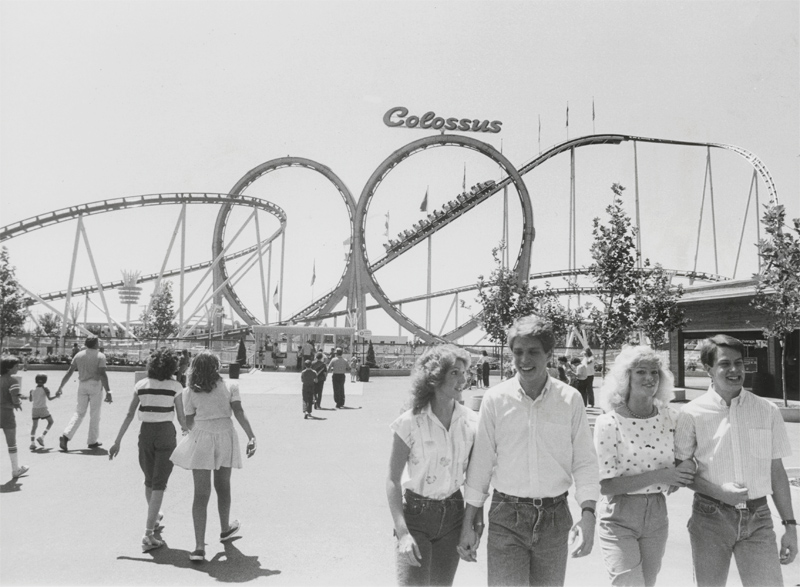
Colossus was Lagoon’s fifth operating roller coaster as well as the fastest and tallest ride at Lagoon when it opened at the beginning of April 1983. A taller ride wouldn’t be built until the 147-foot Sky Scraper was installed in 1991.
There was apparently some debate among locals about whether or not Colossus was the height it was claimed to be when Lagoon sought permission from the city to install the ride. According to one story, some homeowners on State Street thought it was too tall after it was built. So a couple of Farmington residents climbed up the lift one night to measure it with a rope and found it was a little taller, presumably because of the blocks the ride sits on. To compromise, the height had to be changed on the building permit, a local citizens board was created and Lagoon planted trees to screen the ride from State Street.
The south end of Lagoon had been growing little by little during the 1970s. After reaching the campground, the park extended on toward the west. In 1982, before Colossus arrived, the rides on this leg of the South Midway consisted of Paratrooper, Flying Aces, Musik Express and Space Scrambler. Flying Aces had just been ousted from its previous location, south of the Roller Coaster, to make room for the Lagoon Music Theatre (now the location of the Biergarten). In the following season, Flying Aces was replaced by a new food and games building that was initially referred to as Colossus Court. Flying Aces returned in 1986 when the North Midway was finally expanded.
Along the lift hill, there are nine flag posts. Photos of the ride in Germany show what may have been flags from different states or cities of that country. At Lagoon, different flags are used every year (generally during the summer months), but the United States flag is always at the top with the German flag next to it.
MAKING A NAME FOR ITSELF
The Colossus sign on the top of the first loop had been there since it opened in Germany in June 1981. The artwork used in advertising in 1983 and on decals on the ride show the name “Colossus” in front of a fire-breathing dragon with a tail twisted into two loops. Probably the first instance of the additional “Fire Dragon” name was in the Davis County Clipper in July 1983.
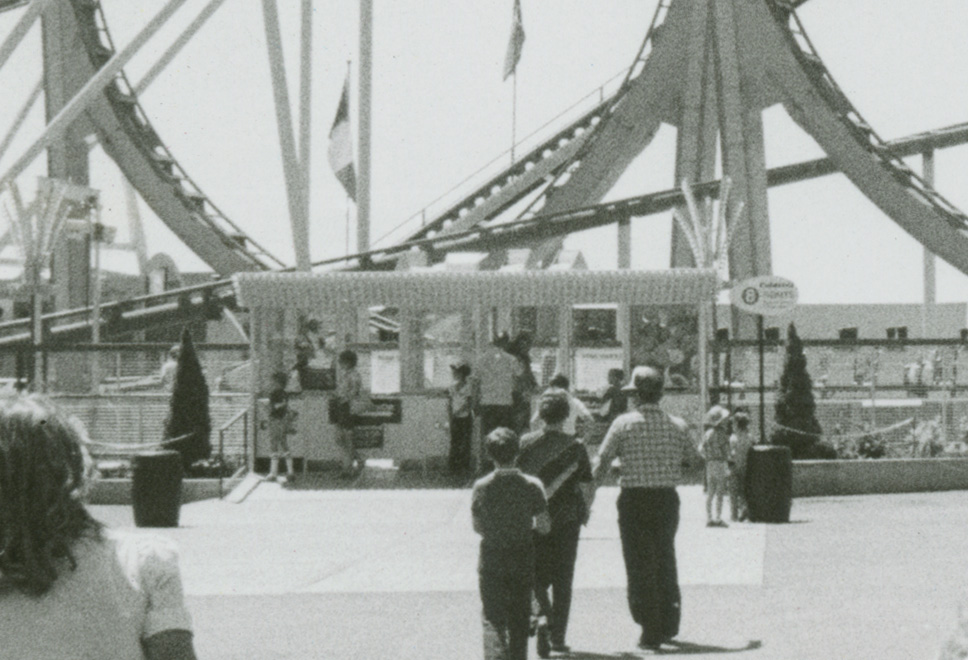
It was later reported that the name was “changed from Colossus to the Colossal Fire Dragon so as not to confuse it with the giant side-by-side racing roller coaster at Six Flags Magic Mountain”. Decals on the ride were then changed to include “The Fire Dragon” below the Colossus logo. A sign was taken from a Zamperla Dragon kiddie coaster, coupled with a newly-created “Fire” sign and placed on top of the entrance.
Having two separate signs that didn’t seem to go together might have been confusing to guests. Some people would refer to the ride as Colossus while others called it Fire Dragon. The “Colossal Fire Dragon” moniker only seemed to be used intermittently in marketing and various print materials during the ’80s and ’90s. By now, “Colossus: The Fire Dragon” has apparently won out as the full, official name of the ride, but most people still just use the Colossus or Fire Dragon nicknames.
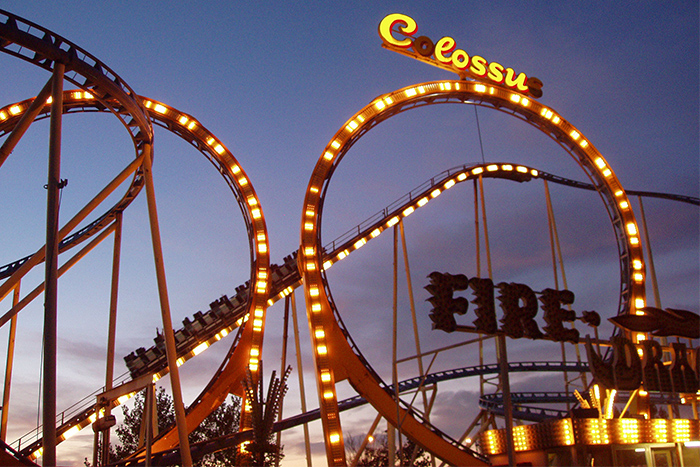
People magazine briefly brought national attention to the ride when they listed Colossus as one of the country’s ten best coasters in 1984. It came in at number eight, just behind The Beast at King’s Island in Ohio.
“Although a short ride, every second is thrill-packed, sassier than Joan Rivers.”
People, July 1984
Speaking of magazines, the cover of a 1991 issue of RollerCoaster! magazine that featured the work of Anton Schwarzkopf showcased Lagoon’s Colossus on the front cover.
Colossus was popular enough that the park’s new kiddie coaster was named after it in 1985. Puff, The Little Fire Dragon was advertised as the newly-hatched offspring of the Fire Dragon.
UPDATES & ADDITIONS
In the 1990s, Lagoon added an on-ride camera to Colossus, placed on a catwalk over the bottom of the second loop. For years, riders would exit the ride and rush up to the Fire Dragon Photo booth next to Musik Express to see the surprised reactions (or intentional poses) of people in their group. On-ride photos ended in 2004.
The decals on the nose of the trains was replaced by a painted logo in an oval in 2003 or 2004. One of the old decals can still be seen on the front of the operator’s booth.
During the 2011-12 off-season, after the ride reached its third decade of operation, Colossus was completely dismantled. Everything but the loops was repainted. The original ticket booth was replaced by a permanent structure that included lockers and a brand new sign – this time with the full name – in the style of the logo used on the trains. The loops were painted and LED lighting was added for the 2013 season. The large Colossus sign on top of the loop didn’t return until March 2016. It now has red lettering in place of the original gold lettering.
Many agree that Colossus: The Fire Dragon is a well-designed, thrill-packed ride and thanks to constant upkeep by Lagoon, this rare Schwarzkopf classic continues to be a favorite, even with the addition of taller and faster coasters.

GALLERY
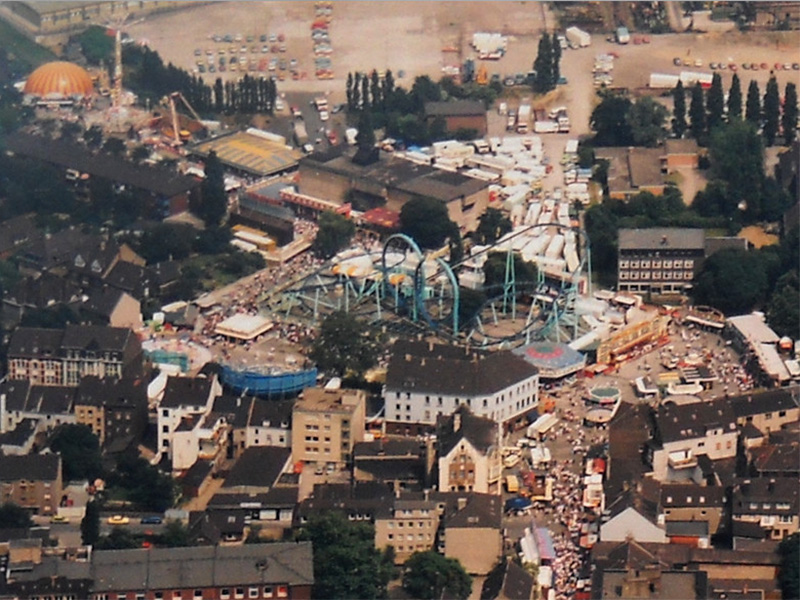
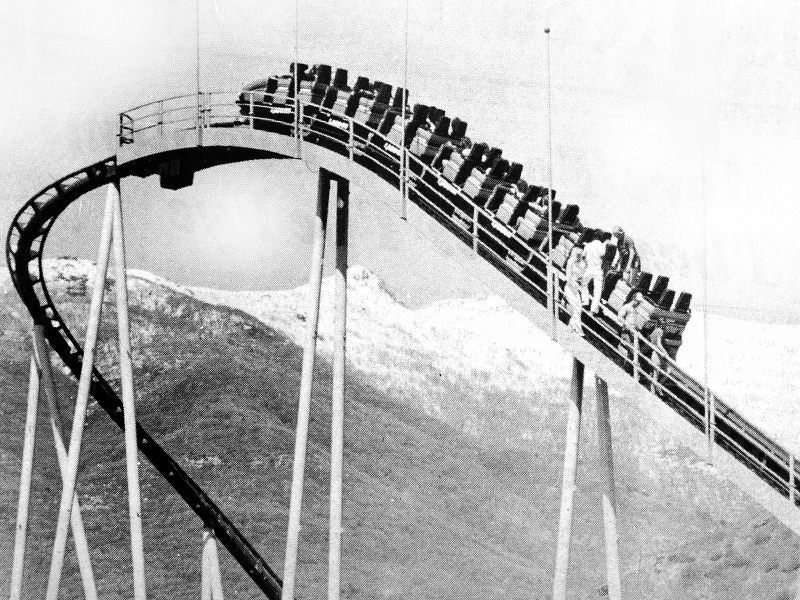
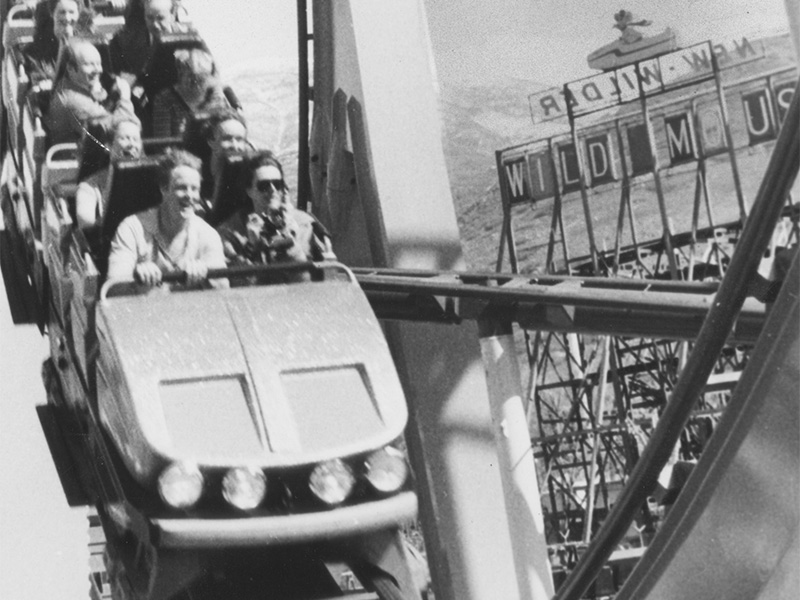

MORE FROM LHP

NOTES
1. Eventually, Schwarzkopf would design coasters with up to five loops. Olympia Looping is the world’s largest transportable coaster and still continues traveling today.
2. A single-looping coaster in Brazil was supposedly converted into a double-looping model around 1981. It was also named Colossus and moved to Dorney Park in Pennsylvania in 1986. It was later renamed Laser until it closed in 2008. Since then it has become known as the Teststrecke and travels Europe.

SOURCES
Schubert, Peter. Looping – der Mann, der in Amerika Wellen Schlägt, 1978.
Pearson, Howard. He’s the master of the midway. Deseret News, 6 Aug 1982.
Largest Loop-the-Loop. Davis County Clipper, 16 Mar 1983.
Lincoln, Ivan M. Lagoon’s new Colossus will make your head spin. Deseret News, 25 Mar 1983.
Souvenir Section. Davis County Clipper, 20 Jul 1983.
Stark, John. Hold on Tight for a Trip on the 10 Best Roller Coaster in the Land. People, 30 Jan 1984.
Lagoon now open on weekends. Deseret News, 12 May 1984.
Origin of the company Werner Robrahn. Top In, archived from 24 May 2007.
Colossus von Bruch/Robrahn. OnRide.de, 15-16 Jan 2013.
Facebook comment from Achim Gorazdza, Facebook.com/lagoonpark, 19 Jun 2013.
Anybody remember these and/or still have them? LagoonFans.com, Feb 2020.
Doppel-Looping with additional trackway curve. Schwarzkopf.net, accessed 15 Feb 2020.
Colossus. Ride-Index.de, 13 Aug 2020.
Sterkrader Fronleichnamskirmes. Sterkra.de, accessed 30 Apr 2021.
Colossus the Fire Dragon. RCDB.com, accessed 1 May 2021.
Pescovitz, David. Introduction of steel coasters. Brittanica.com, accessed 7 Jun 2021.
Messages to the author from Andrew A. via Instagram, 16 Oct 2020.




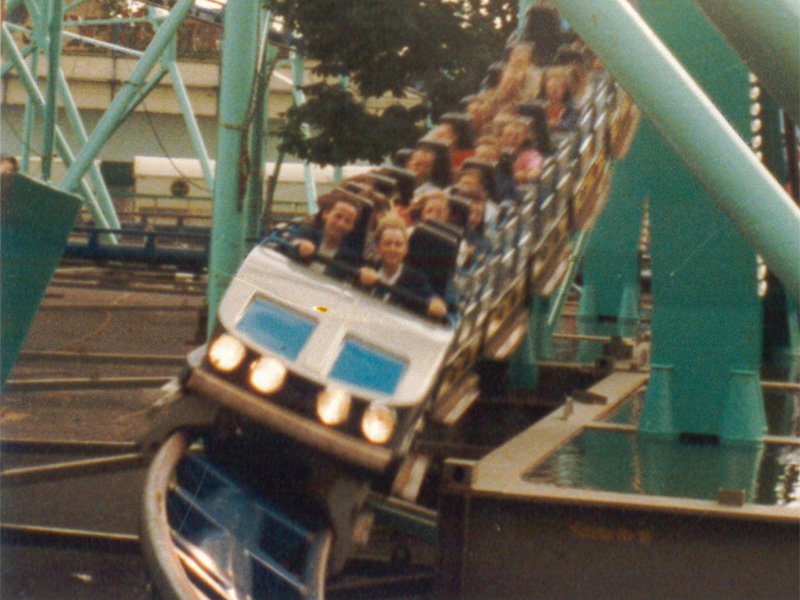
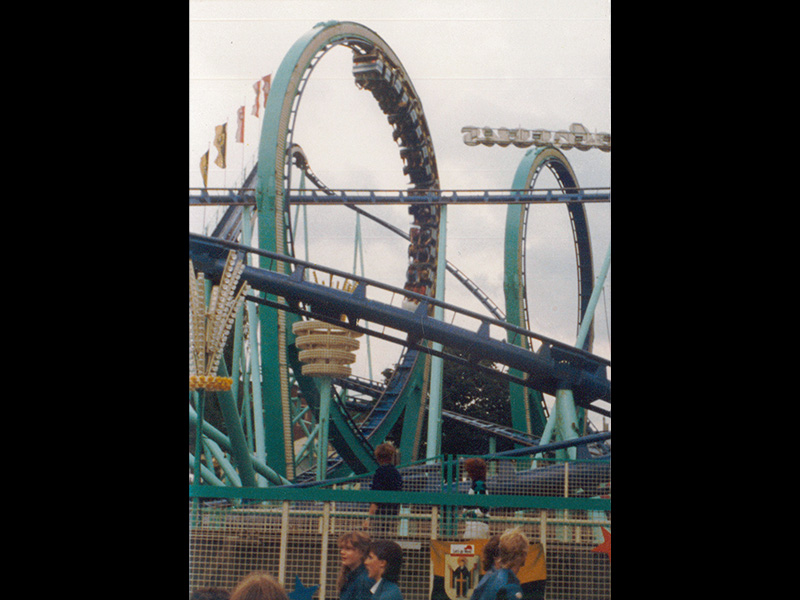
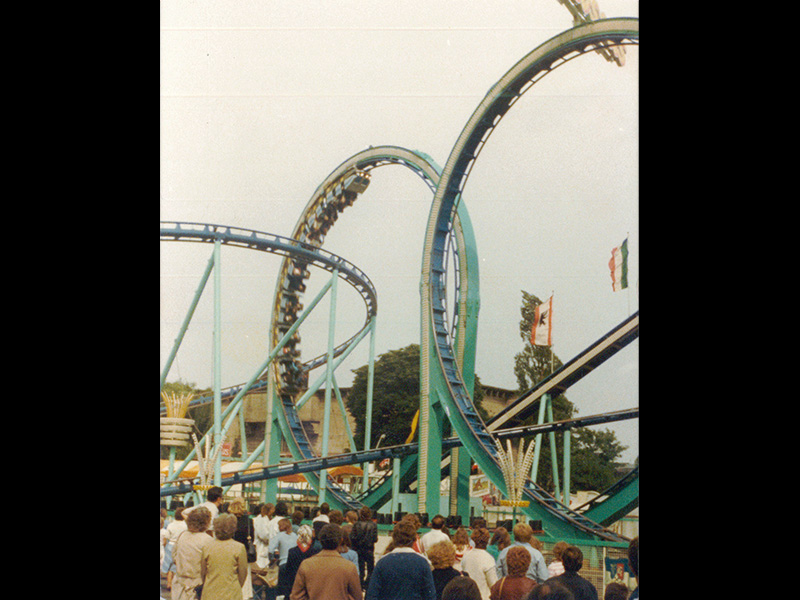



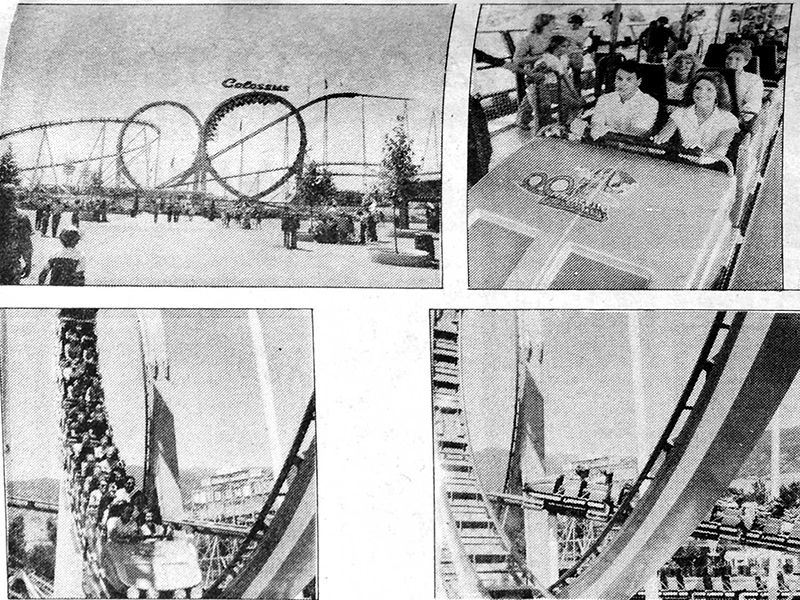

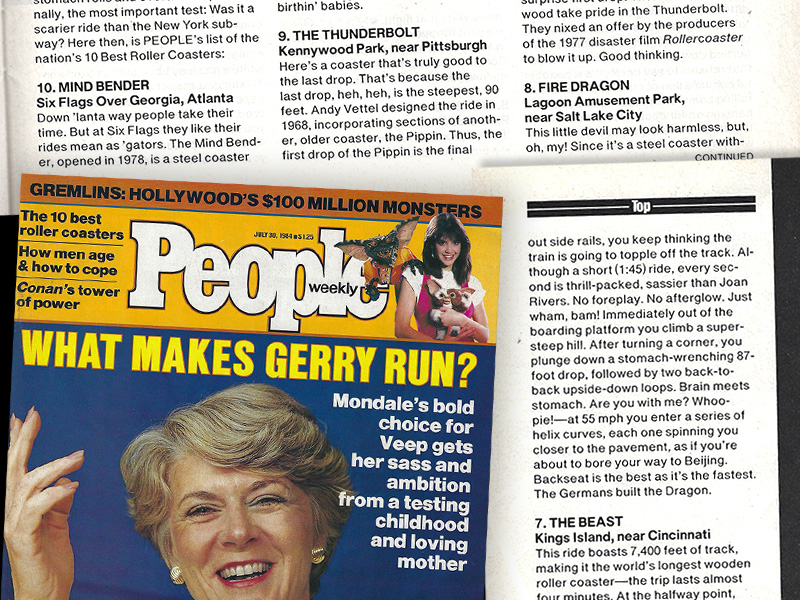
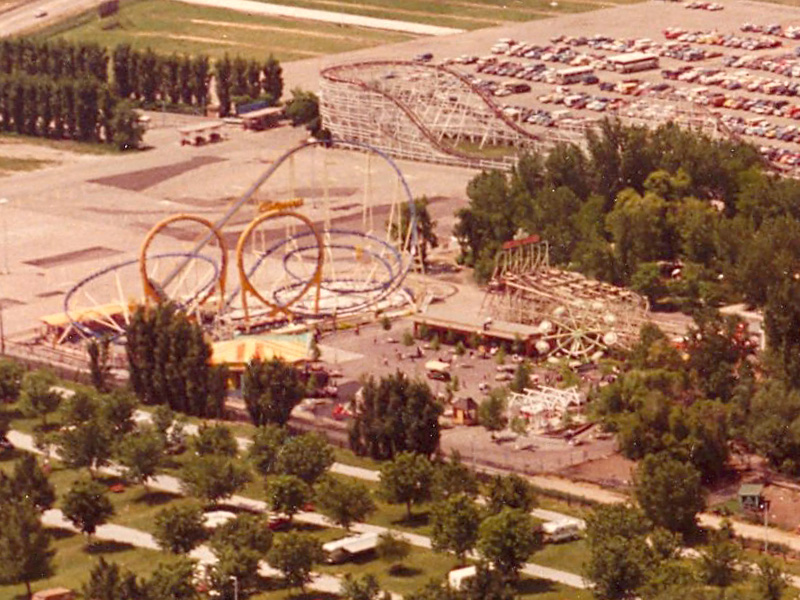
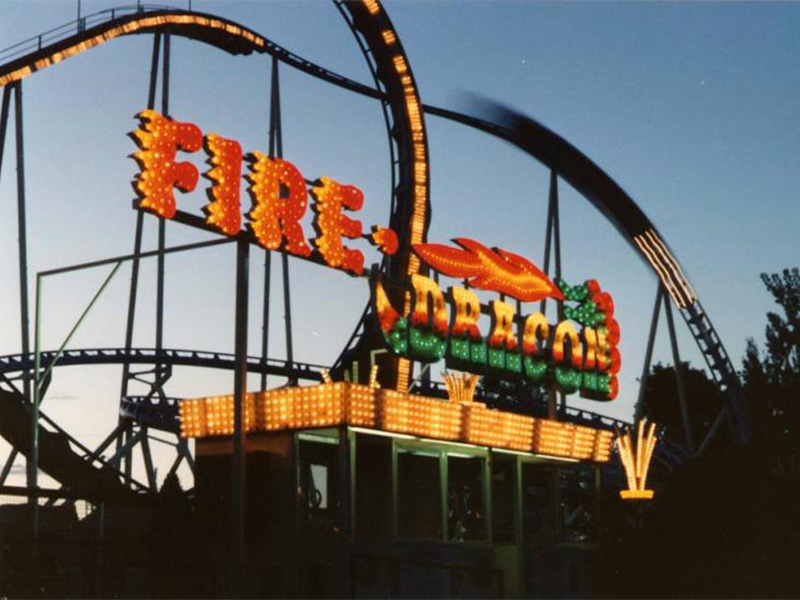
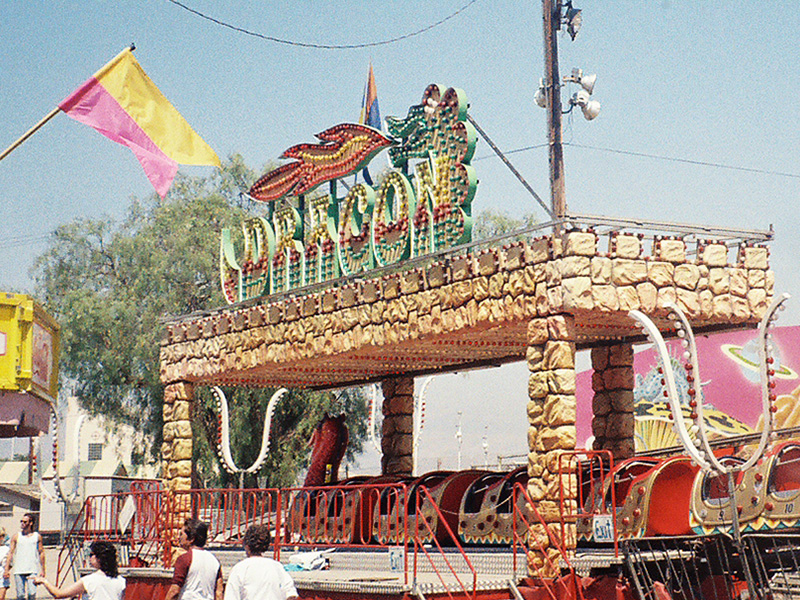


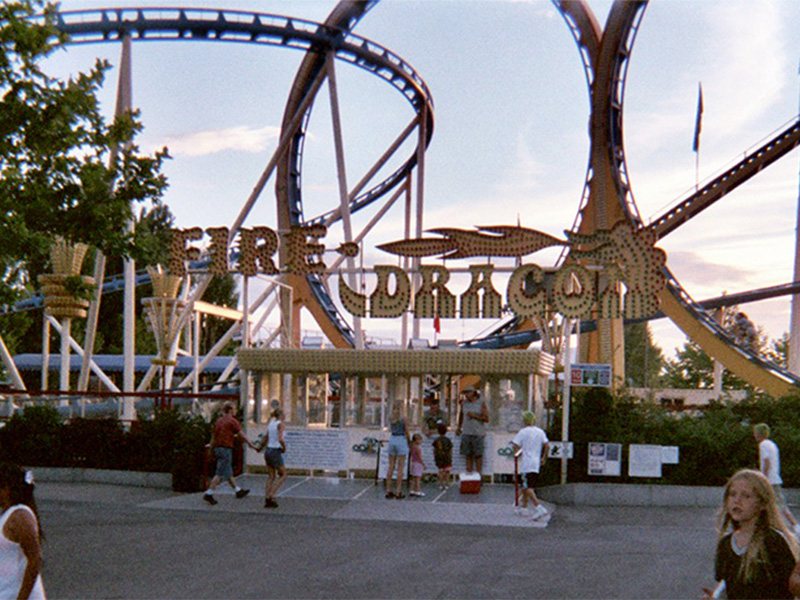

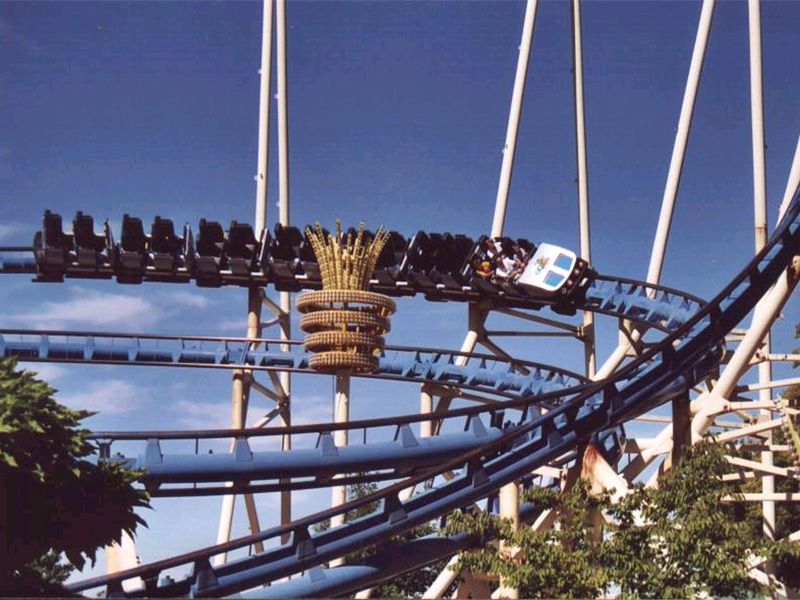
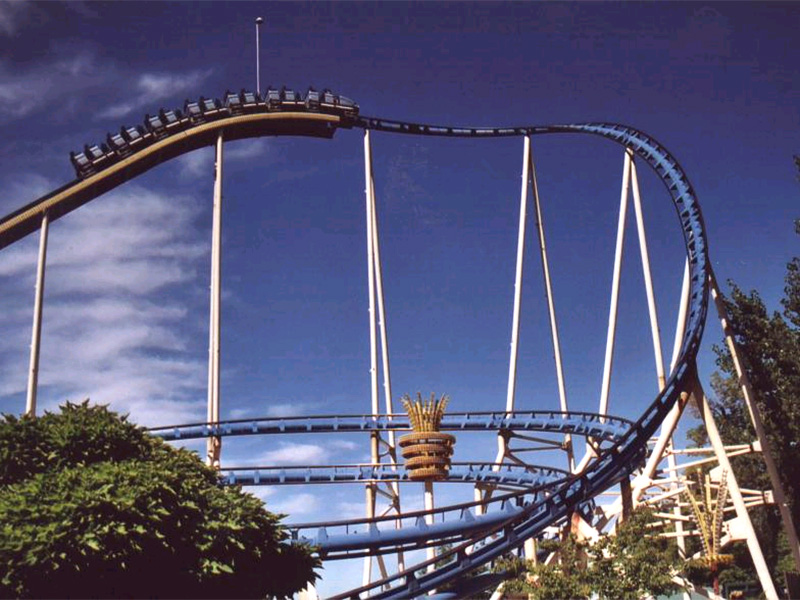
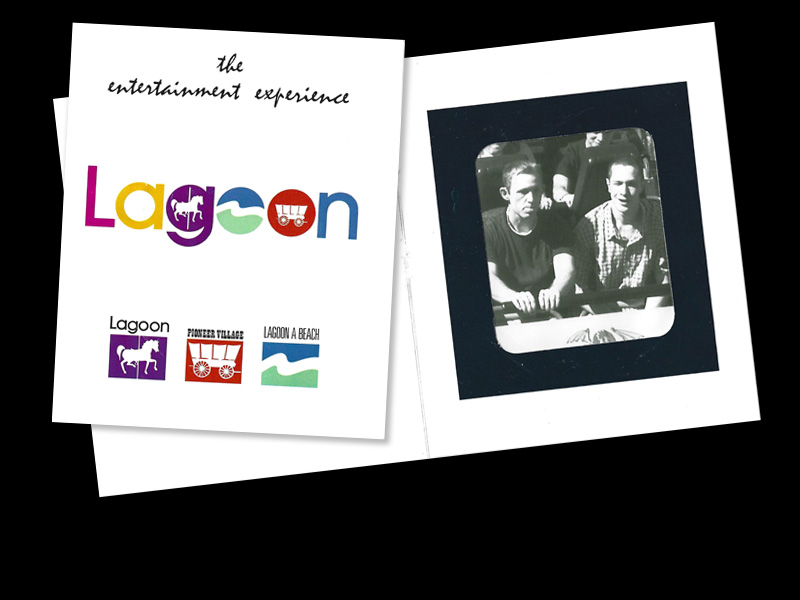
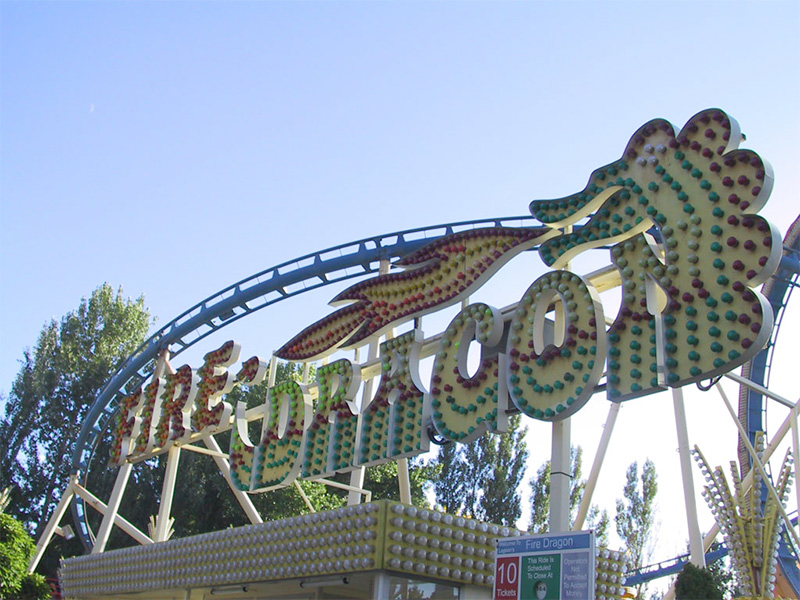


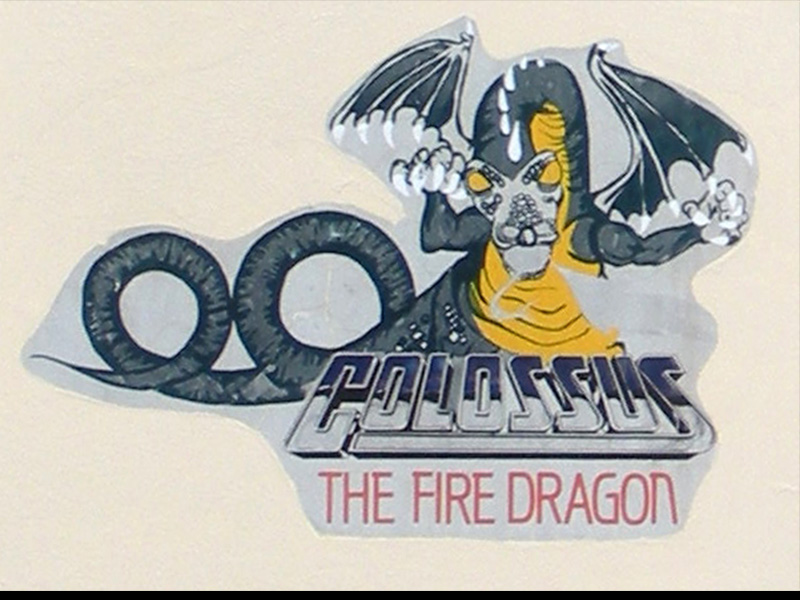
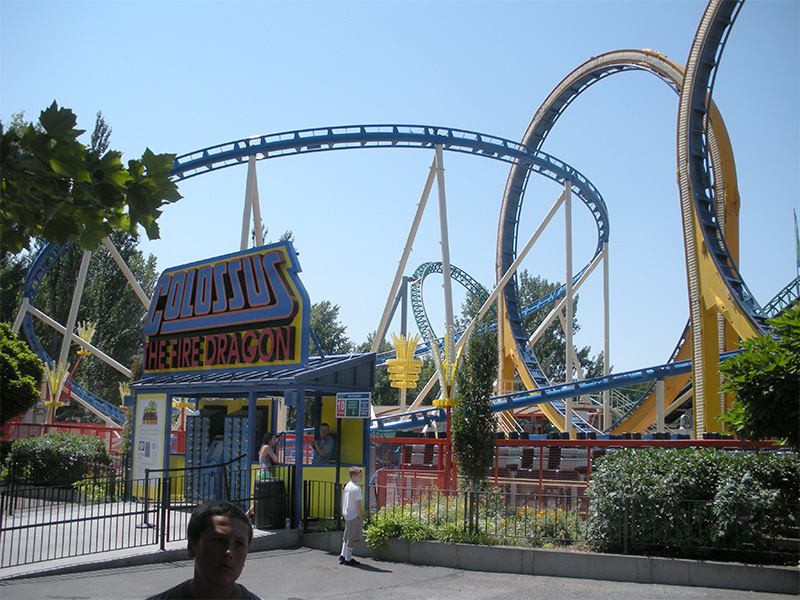


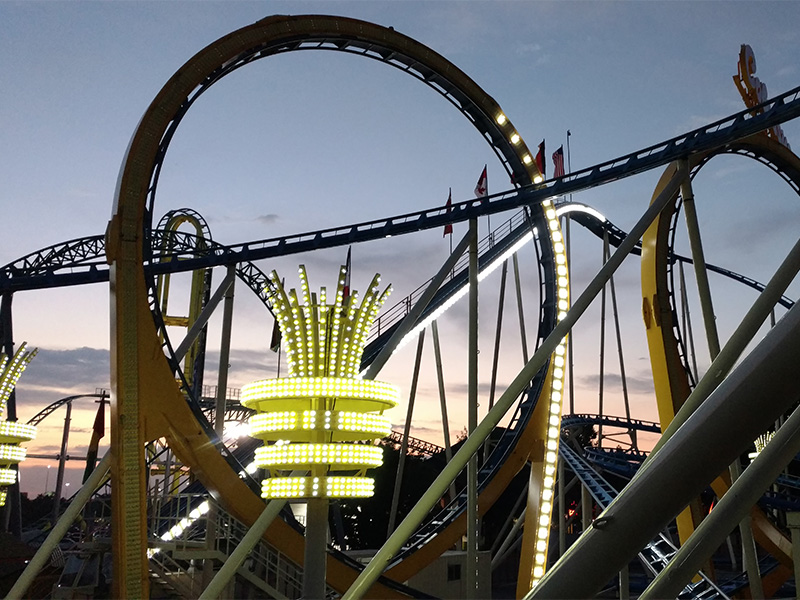

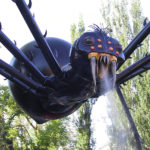
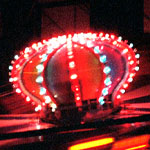
One reply on “Colossus: The Fire Dragon”
This Ride is great 40+ years later it was also my first looping coaster.
I own that issue of Rollercoaster with Colossus on the cover now.
I hope Lagoon keeps this ride for years to come.